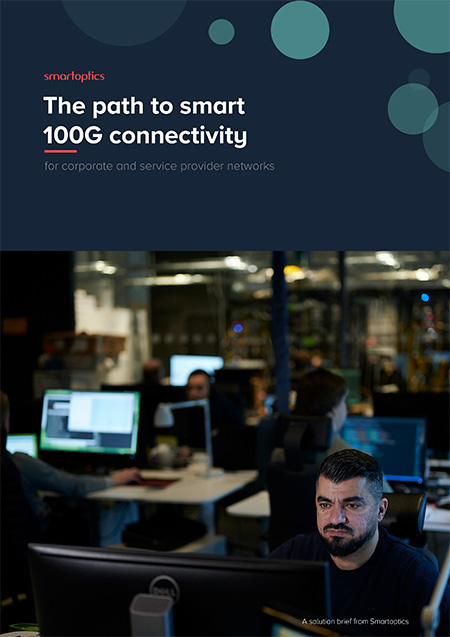THE PATH TO SMARTER DISTRIBUTED ACCESS IN THE SERVICE PROVIDER NETWORK
Consumer demands for a richer internet experience, as well as emerging applications for the Internet of Things (IoT) and even autonomous cars, are driving a growing need for enhanced broadband communications capacity. Cable TV broadband providers with virtual CMTS architectures, mobile network providers with virtual access networks or Cloud RAN (CRAN) 5G networks and fixed network providers offering passive optical access (EPON) are all looking for smart ways to offer high-capacity connectivity to their end-users.
To meet these increasing bandwidth requirements and improve service delivery in the last mile of transport, many service providers are now opting for an architecture with network aggregation points closer to the subscriber. These aggregation points are then typically back-hauled to the metro or regional network over high capacity links in a “spine-and-leaf” architecture. As a result, today’s operators also need to incrementally upgrade the backhaul capacity in the “second level” of their access networks.
From analogue signals to standardized connectivity
Traditionally broadband suppliers have relied on analogue signals over fiber, but now the trend is clearly in favor of 10 or 25G Ethernet solutions. Much in the same way mobile network access connectivity is moving towards standardization.
While most operators have previously turned to passive DWDM solutions with passive transceivers and filters for access network aggregation, standardized, Ethernet-based communication is opening up for new possibilities. New hybrid active/passive WDM access network solutions are increasingly addressing the challenges associated with relying completely on passive solutions.
Higher up in the network architecture, forward-thinking organizations are beginning to seize the opportunity of 100G connectivity in their metro access networks. One commonly appreciated approach is to deploy a data center practice, similar to that used to connect data centers in an enterprise or metro environment. Honeycomb networking structures, with data centers distributed throughout the access area, allows the operator to create an access network with great coverage and aggregation points at a reasonable distance from the end-user.
Requirements for smarter metro aggregation
There are three drivers to meet the needs for metro aggregation in smarter access networks:
Realtime applications demand minimal latency – The lowest possible latency has become a critical success factor to fully support mobile 5G applications, an increased multi-media experience in CATV networks, as well as the increased interest in high-capacity IoT applications. A smart network design places these real-time applications as close to the end-user or end-point in the network as possible, driving the need for low-latency in the access network.
A large number of sites drives the need for simplicity – As the number of access points increases so do the number of links and sites close to end-users. This drives the need for a solution that is easy to deploy and as easy to scale. Ideally the solution reduces manual work to a minimum through automated provisioning, allowing operators to add new services quickly and without hassle.
Physical size and power matters – Since solutions for back-haul access need to be integrated in metropolitan data centers, which are limited in space, a small footprint set up is preferred. Solutions that minimize power consumption are another important decision factor for sustainable and cost-efficient networking solutions.
100G DWDM networking with PAM4 an ideal solution for smart access networks
Luckily there are solutions that address all the key success factors of an upgraded metro access network. PAM4 QSFP28 form factors transceivers offer a smooth and cost-efficient option for connectivity in the access network environment spanning distances of up to 80 km. 100G DWDM links, created with PAM4 transceivers in combination with modern open line technology can provide easily scalable, high-capacity yet cost-effective infrastructure solutions that meet the needs of today’s and tomorrow’s access networks.

The path to smart 100G connectivity
Learn more about upgrading your network to smart 100G connectivity
Related articles

Why hundreds of enterprises with mission-critical workloads choose Smartoptics for Brocade networking

Four reasons to choose Smartoptics for Brocade SAN DCI

